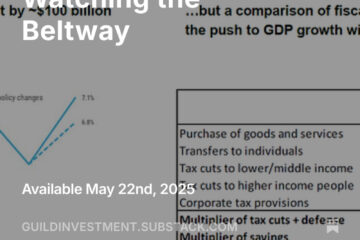Bond Liquidity Risks
As we noted last week, the Bank for International Settlements (BIS) published its annual report, in which it had some harsh words for the world’s financial authorities. Unless they start to normalize their policies, the BIS said, they may cause distortions in global financial markets that will lead to a future crisis. And when that crisis comes, they’ll have no policy tools available to cope with it.
The BIS also had warnings about the liquidity of bond markets which we think are worthwhile for investors to listen to.
Increasing Volatility In Bond Markets
Volatility has been unnaturally low for quite some time, and a return of more normal volatility in financial markets is, on balance, not a bad thing. The policies of central banks since the crisis have served to suppress volatility, and to some extent its return is a sign that investors are adjusting their risk perceptions appropriately. However, the BIS points out that when volatility spikes are unrelated to any real economic news or developments, it may be a sign that there is a problem with market liquidity:
“There are two aspects to market liquidity. One is structural, as determined by factors such as investors’ willingness to take two-way positions and the effectiveness of order-matching mechanisms. This type of liquidity is important in quickly and efficiently dealing with transitory order imbalances. The other reflects one-sided, more persistent order imbalances, as when investors suddenly all head in the same direction. If investors persistently underestimate and underprice this second aspect, markets may appear liquid and well-functioning in normal times, only to become highly illiquid once orders become one-sided, regardless of structural features.
“In the wake of the financial crisis, specialized dealers, also known as marketmakers, have scaled back their market-making activities, contributing to an overall reduction in the liquidity of fixed income markets. For example, the turnover ratio of U.S. Treasuries and investment grade corporate bonds, has been on a declining trend since 2011. Some of the drivers for this retrenchment are related to dealers’ waning risk tolerance and reassessments of business models… Others have to do with new regulations… Finally, increasing official sector holdings of government securities may also have contributed to lower market liquidity…
“Even seemingly very liquid markets, such as the U.S. Treasury market, are not immune to extreme price moves. On 15 October 2014, the yield on 10-year US Treasury bonds fell almost 37 basis points – more than the drop on 15 September 2008 when Lehman Brothers filed for bankruptcy – only to rebound by around 20 basis points within a very short period. These sharp moves were extreme relative to any economic and policy surprises at the time. Instead, an initial shock was amplified by deteriorating liquidity when a material share of market participants, who had positioned themselves for a rise in long-term rates, tried to quickly exit their crowded positions. Automated trading strategies, especially high-frequency ones, further boosted the price swings.”
The BIS also notes how even though the retreat of market-makers has led to lessened liquidity in the bond markets, an “illusion of liquidity” has been created both by the rise of bond ETFs and by central bank bond purchases. This “illusory liquidity” is at risk of drying up as soon as it is needed most — since during severe market stress it can simply evaporate. Under normal conditions, it seems like the liquidity that used to be provided by the market makers who have mostly closed shop and gone to the sidelines.
Investment implications: Along with many analysts, the BIS has sounded a note of caution about the liquidity of bond markets. Growing bond funds and plentiful buying by central banks have created an illusion of liquidity in fixed-income markets — but unlike the liquidity that used to be provided by market-makers, this illusory liquidity may well evaporate as soon as markets are under stress. This warning from the institution that serves as the ‘trade association of central banks’ highlights what we view as yet another reason to be cautious about bond exposure as rate increases draw closer and market volatility picks up.

